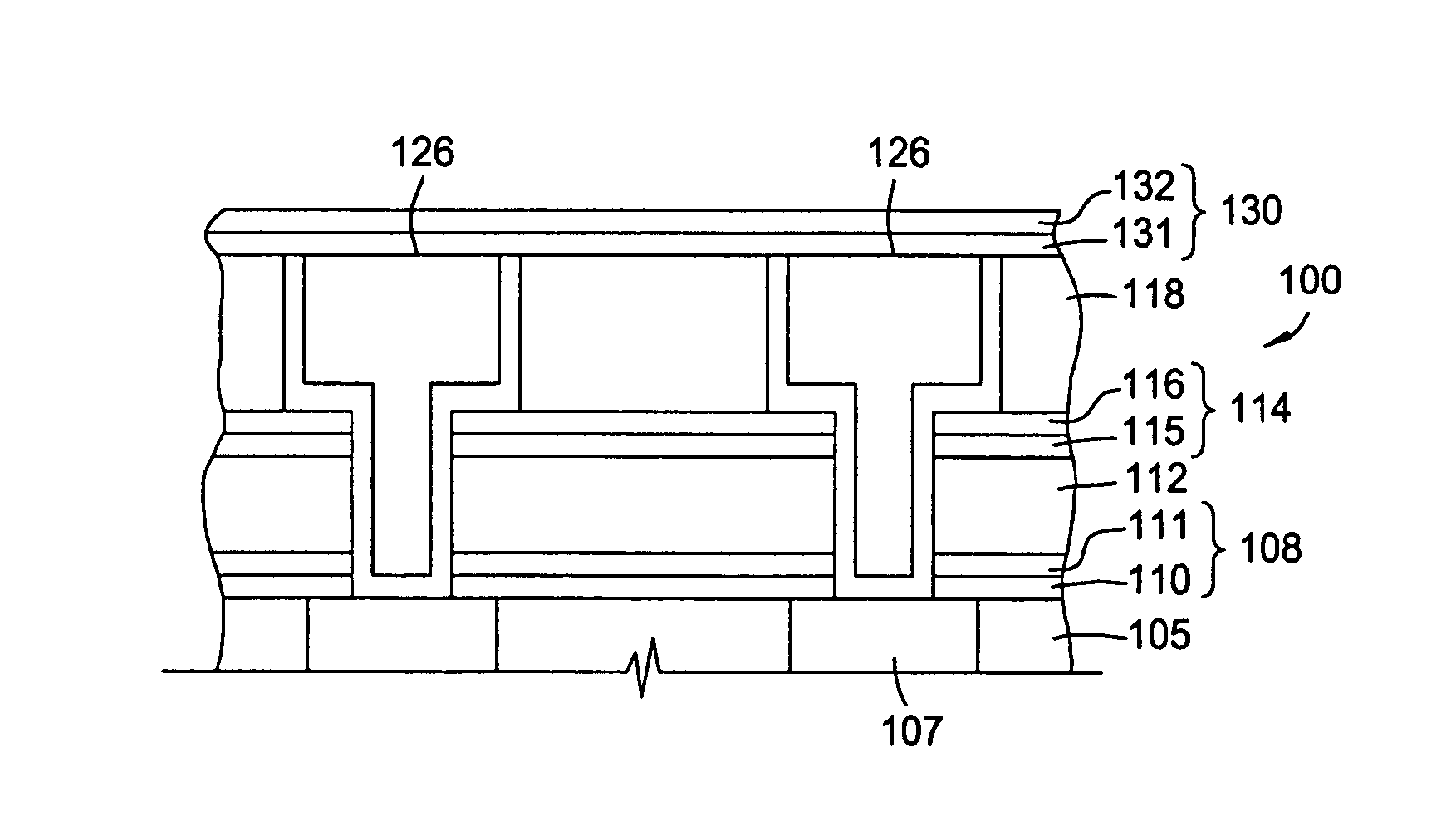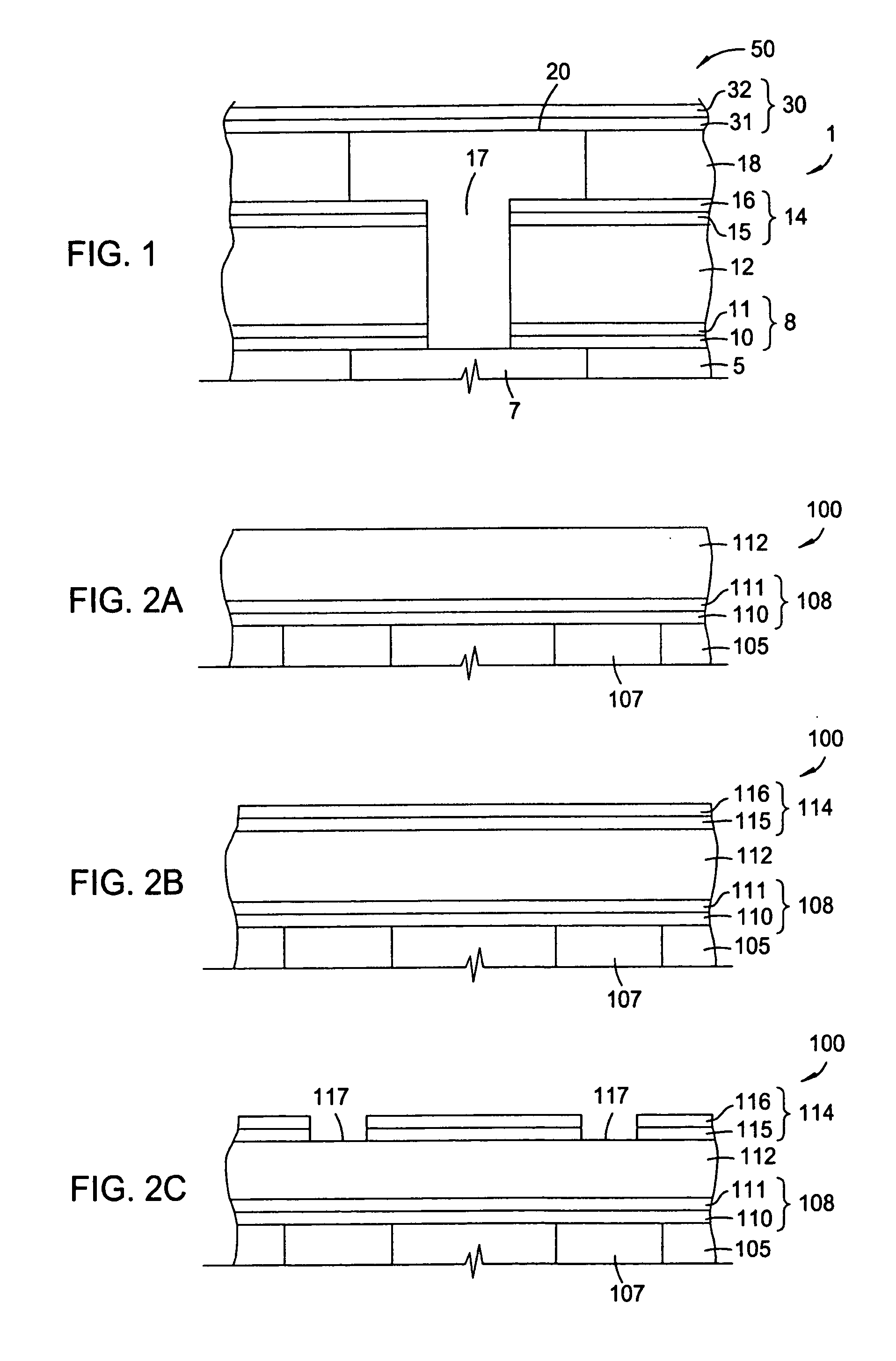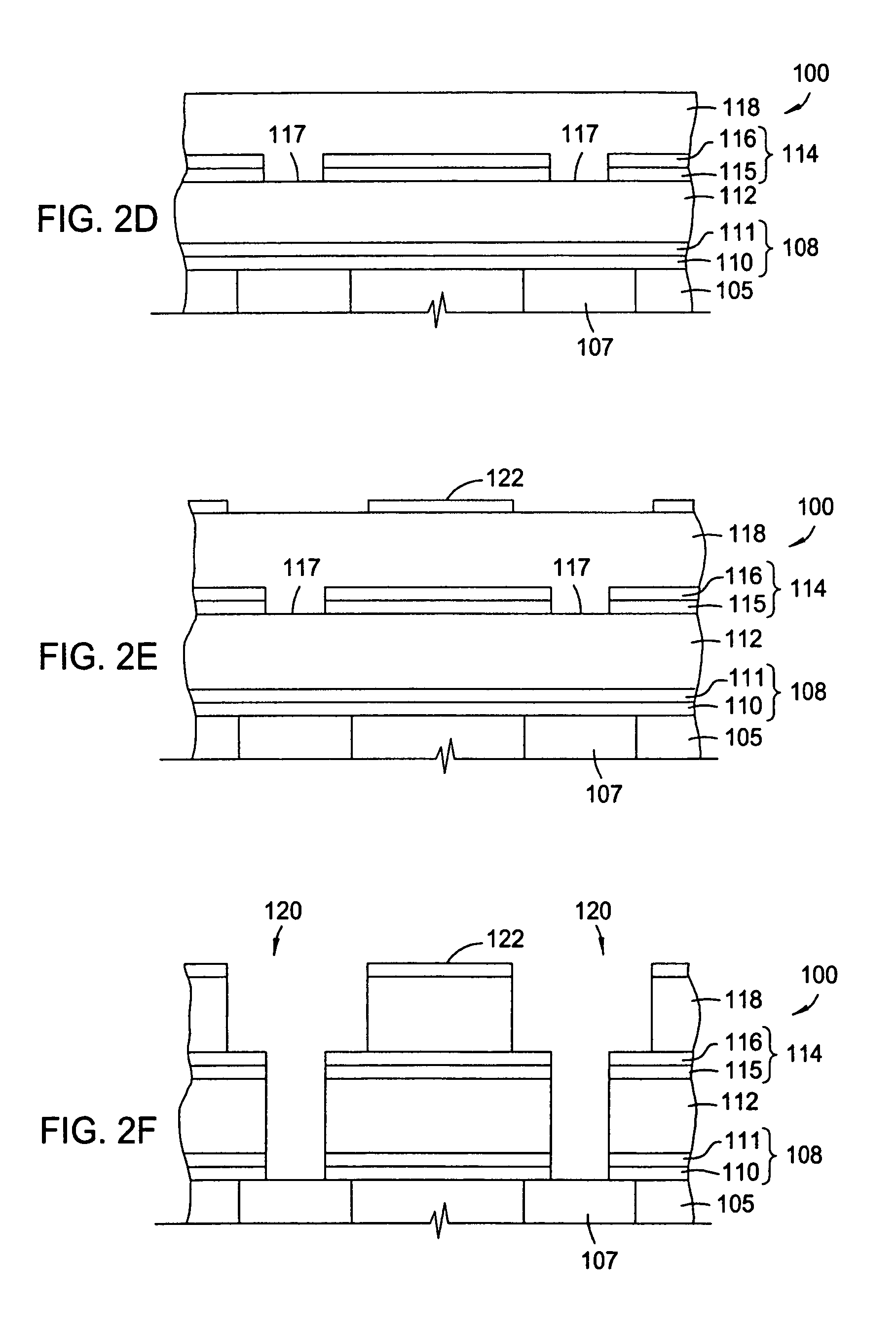Bi-layer approach for a hermetic low dielectric constant layer for barrier applications
- Summary
- Abstract
- Description
- Claims
- Application Information
AI Technical Summary
Benefits of technology
Problems solved by technology
Method used
Image
Examples
Embodiment Construction
The words and phrases used herein should be given their ordinary and customary meaning in the art by one skilled in the art unless otherwise further defined. In situ should be broadly construed and includes, but is not limited to, in a given chamber, such as in a plasma chamber, or in a system, such as an integrated cluster tool arrangement, without exposing the material to intervening contamination environments, such as breaking vacuum between process steps or chamber within a tool. An in situ process typically minimizes process time and possible contaminants compared to relocating the substrate to other processing chambers or areas.
Aspects of the invention described herein refer to a method and apparatus for depositing a bilayer of silicon carbide containing materials having a low dielectric constant. The silicon carbide barrier layers include nitrogen doped silicon carbide, oxygen-doped silicon carbide, and silicon carbide deposited from aryl containing organosilicon compounds...
PUM
| Property | Measurement | Unit |
|---|---|---|
| Percent by atom | aaaaa | aaaaa |
| Dielectric polarization enthalpy | aaaaa | aaaaa |
| Electrical conductor | aaaaa | aaaaa |
Abstract
Description
Claims
Application Information
 Login to View More
Login to View More - R&D
- Intellectual Property
- Life Sciences
- Materials
- Tech Scout
- Unparalleled Data Quality
- Higher Quality Content
- 60% Fewer Hallucinations
Browse by: Latest US Patents, China's latest patents, Technical Efficacy Thesaurus, Application Domain, Technology Topic, Popular Technical Reports.
© 2025 PatSnap. All rights reserved.Legal|Privacy policy|Modern Slavery Act Transparency Statement|Sitemap|About US| Contact US: help@patsnap.com



